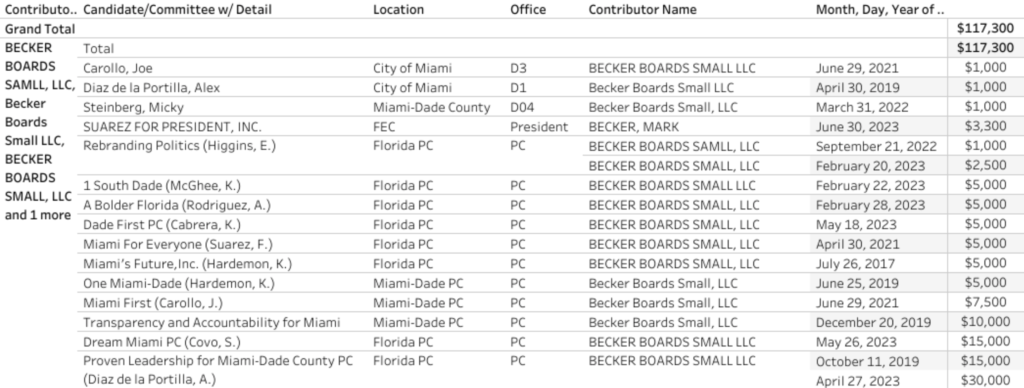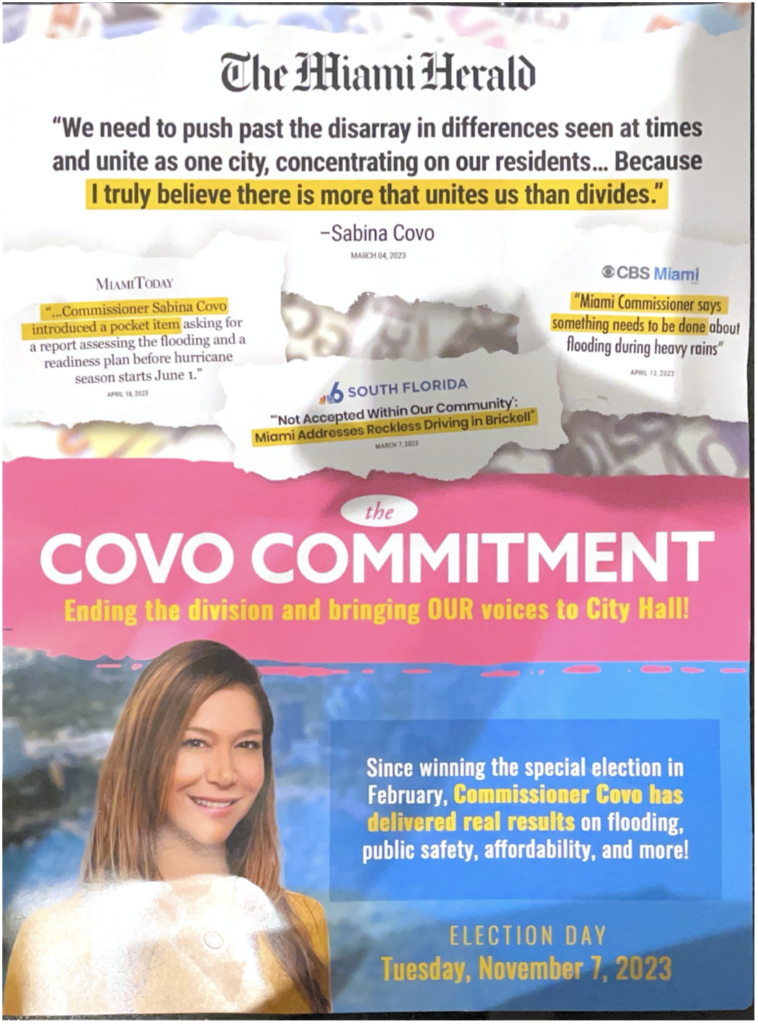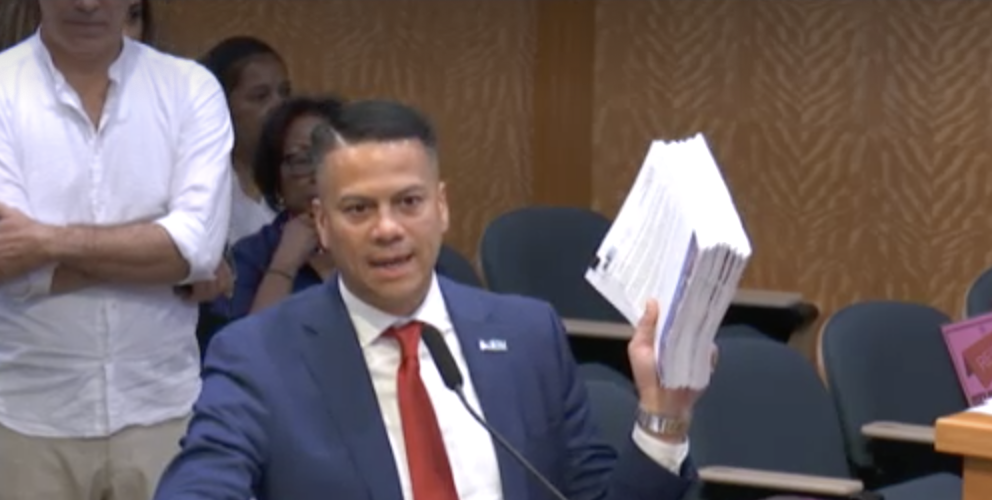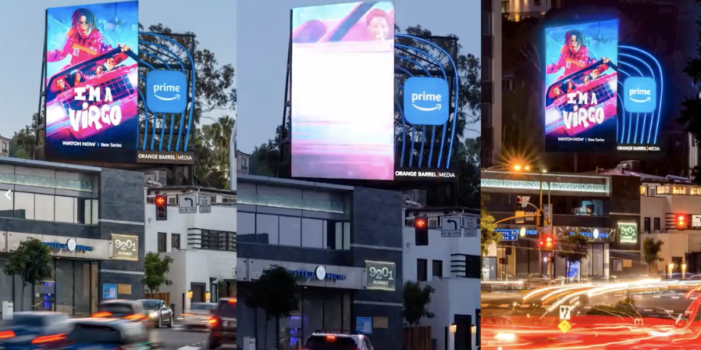Miami City Commissioners deferred making a decision last week on allowing up to 45 giant LED billboards downtown — and some critics worry the can will be kicked down the road until after the November election. You know, so commissioners don’t have to be held accountable.
Or maybe so they can collect more contributions from billboard companies.
Residents and activists who are against the giant, flashing signs don’t stand a chance. They haven’t donated tens of thousands of dollars to the five people who make the decision.
According to campaign finance reports put together by activist Dani Rivera (follow her on Twitter) Becker Boards LLC has spent at least $117,000 since 2019, arguably to get what they want. The most recent donations include $30,000 in April to Commissioner Alex Diaz de la Portilla‘s political action committee, Proven Leadership for Miami-Dade, $7,500 to Miami First, Commissioner Joe Carollo‘s PAC, $8,300 to Mayor Francis Suarez, between his city PAC and his presidential PAC, and $15,000 to Commissioner Sabina Covo‘s PAC, Dream Miami. They also gave $10K to a PAC called Transparency and Accountability for Miami.
Read related: Miami redistricting map is thrown out again, ACLU’s map is in for now
Diaz de la Portilla got another $100,000 from Truth is the Daughter of Time, the PAC owned and managed by former Miami Commissioner Marc Sarnoff, who has been the longtime registered lobbyist for billboard companies. And Rivera’s research shows that Sarnoff’s PAC has gotten more than $487,000 from outdoor sign companies. So far just this year, several signage companies donated $185,000 to the Daughter of Time. Last year, it was $130K. It’s his only donor.

So, ADLP got at least $150K from billboard companies.
But that was expected. What was unexpected was Covo, the newcomer, who says she is not connected to or swayed by any special interests. She even said at the meeting that she would vote against the billboards. But then she voted in favor of the deferral.
Or will she support a watered down version of the code after they give her another check? As always, she seems very flexible.
At the very least, she should return the $15K. Or did she spend it already? Did the billboards fund this glossy mailer that takes several headlines out of context?


James Torres, who is running against her in the District 2 race, says there is nothing that could make the change palatable. The president of the Downtown Neighbors Alliance, spoke during public comments and said that the community was united in “strong opposition.” Torres brought a huge stack of petitions against the proposed changes and said he had collected more than 10,000 signatures rejecting the “intrusive” signage.
“Imagine downtown along with our beautiful bay and open spaces being cluttered with bright digital billboards,” Torres said, comparing it with Times Square and Victoria Harbor in Hong Kong. “We will not stand for this because it is not the correct thing to do.”
He reminded commissioners that the planning and zoning board voted 10-0 against moving forward.
Nathan Kurland, a realtor who lives in Coconut Grove, said the amendment to the code had a bunch of problems: no restrictions on electronic message systems, no restrictions on media towers, no addressing of sign maintenance.’
“The sign code should but does not require that the illumination shall not be visible from residential units, shall not shine into adjacent property and shall not create a nuisance or a property distraction,” Kurland said.

“Over and over again, this commission has opened the barn door to an industry that has significantly changed our unique subtropical community into a flashing and distracting mess everywhere that residents and tourists look at,” Kurland said.
Read related: Sabina Covo leads Miami District 2 candidates in campaign fundraising
He is right. This has come up many times for at least the last 10 years and residents have always been against it.
The current sign code amendment would allow up to 45 more LED signs — including mega signs of 1,800 square feet and 10 floors in height — on government owned properties, including in city parks. The parks and properties that are likely to be targeted include Bayfront Park, Maurice Ferré Park, Virginia Key Beach Park, Adrienne Center for Arts, Pérez Art Museum, Miami’s Children Hospital, Olympia Theater and others.
The vote, which has been deferred twice already, was deferred until September and could come back with studies that show what the financial impact is — Carollo said he fears having more billboards will water down the value — and the amount of light pollution and interference the signage would produce.
Commissioner Manolo Reyes said he has already asked for a study of “how the light would affect the neighborhood and how much light pollution we are going to have there.”
He also said that the billboard companies had not met with residents. “And that is inexcusable,” Reyes said.
This comes back to the commission in September. Let’s see how much more money the sign companies spread around between now and then.

